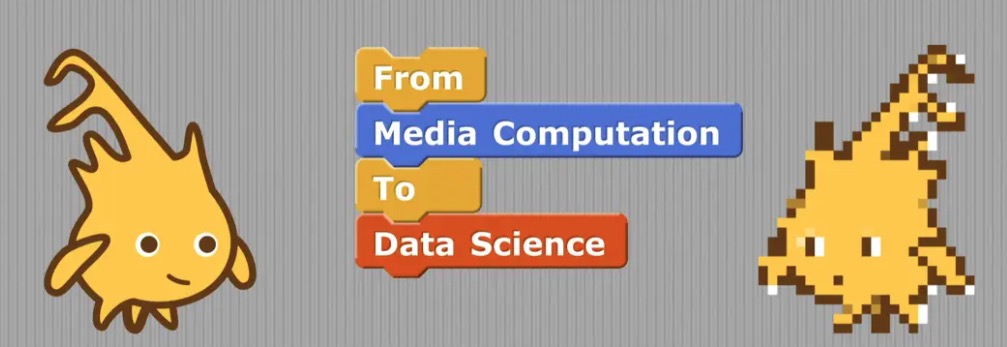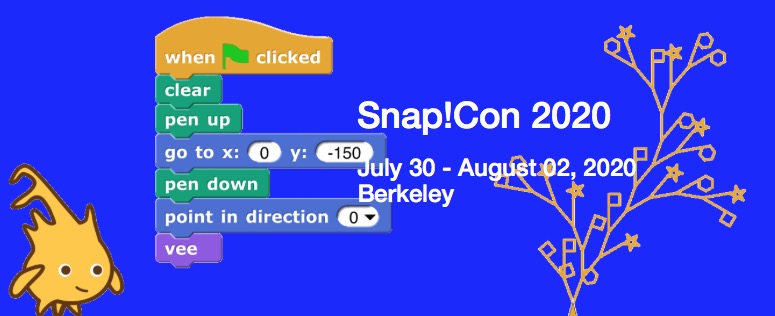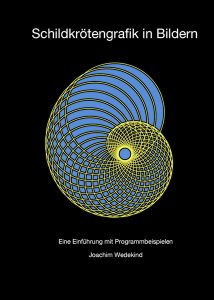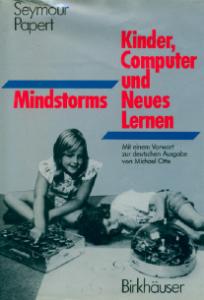Hinweis: Eine deutsche Fassung dieses Berichts findet sich auf meinem konzeptblog unter 50 Jahre Logo Memo No. 3
 After my retirement, I only sporadically pursued my fields of work in instructional technology and media didactics in publications, project descriptions or statements. My new interests took priority (Digital Art, Opticals). But the recently published book Twenty Things to Do with a Computer Forward 50 I ordered and read right away. It interested me because „This book gathers dozens of the world’s most creative teachers, scholars, administrators, activists, and developers to reflect upon the impact of Twenty Things and use the wisdom of Solomon and Papert to propel the future of education.“
After my retirement, I only sporadically pursued my fields of work in instructional technology and media didactics in publications, project descriptions or statements. My new interests took priority (Digital Art, Opticals). But the recently published book Twenty Things to Do with a Computer Forward 50 I ordered and read right away. It interested me because „This book gathers dozens of the world’s most creative teachers, scholars, administrators, activists, and developers to reflect upon the impact of Twenty Things and use the wisdom of Solomon and Papert to propel the future of education.“
The editor Gary Stager takes the publication of the report by Seymour Papert and Cynthia Solomon Twenty Things to Do with a Computer (Logo Memo No. 3) in June 1971 – 50 years ago – as an opportunity to reflect on the approaches formulated in it, to evaluate their implementation and to draw conclusions for the future of learning (at least according to Stager in the introduction).
When the book talks about Papert’s constructionist approach and the programming language Logo (in whose development Cynthia Solomon played a major role), it is necessary in the meantime to briefly reconstruct the context, because for many contemporary readers the names and concepts may not be familiar. The constructionist approach combines reform pedagogical ideas on self-determined learning and participation with learning theory considerations. It is based on the constructivism of Jean Piaget (Papert worked with Piaget for several years), but there is a much stronger emphasis on creative action in the sense of constructing things. The production of things (artefacts) supports the independent examination of problems and their understanding. Learning is embedded in the situational context and promotes discussion and evaluation in the group. To understand this approach, Papert’s book Mindstorms is actually indispensable.
I became acquainted with Papert’s approach and the programming language Logo shortly after starting my career in the mid-1970s (inspired, among other things, by a presentation in the edited volume Computer im Unterricht with reference to the LOGO Memos des MIT AI Lab, which I obtained at the time after a postal request). Since 1981, when I was able to work with Logo on the Apple ][ myself, I have practised this programming language and Papert’s approach again and again as a user, teacher and teacher trainer – and for my current work on Coded Art, I use the Logo derivative Snap!. I have learned a lot from the German logo group around Herbert Löthe and Ulrich Hoppe (Ludwigsburg), and Jochen Ziegenbalg (Reutlingen/Karlsruhe). To be honest, their and my efforts have not been successful in establishing Logo and the Papert approach permanently. Even the modern Logo variants Scratch and Snap! tend to lead a shadowy existence in the school context today. That’s why I was expecting the book Twenty Things … to provide impulses on how Papert’s approach can perhaps be used more effectively in today’s changed school and social environment. Unfortunately, there is not much to be found.
In Logo Memo No. 3 Twenty Things to do with a Computer, Papert and Solomon outline twenty projects in order to, in this sense, „introduce everyone of whatever age and whatever level of academic performance, to programming, to more general knowledge of computation and indeed to mathematics, to physics and to all formal subjects (..).“ For Gary Stager this memo is „a revolutionary document that set the course of education for the next fifty years and beyond. (…) its impact is all around us. In 1971 Solomon and Papert predicted 1:1 personal computing, the maker movement, children programming computers, robotic construction kits, computer science for all, and integrating computing across the curriculum.“ (p.1)
This rather exuberant introduction also characterises many of the contributions. Most of them come from companions of Papert and Solomon who report on their activities at the time and the experiences they made. They often read like reports from the good old days and usually lack a critical evaluation of the experiences and lessons for today and the future. The current state of affairs is that central aspects of constructionism can be found in projects of the Maker Culture or initiatives such as Code.org. However, most of these projects were developed without knowledge of it and at least without reference to it. Rather, they are an expression of the actual availability of computers, the internet, robots and other controllable devices for everyone. However, such projects still find their place outside of school curricula.
The many years of dogged efforts to take account of the importance of digitisation in schools are only slowly leading to the inclusion of computer science concepts in school curricula, whether as a subject of computer science (at least in Germany) or integrated into the subjects (for example, my contribution Kunst Codieren Lernen at forum.bildungbw). The book makes clear that fundamental considerations have been available for 50 years. However, it offers only limited help for work in today’s environment.









